Soldering Iron Stand
Intro: Soldering Iron Stand
I found myself in need of a soldering iron stand and didn't like the looks of any I could find. While I don't do a huge amount of soldering but this will be sitting on desks or work stations where I'll see it much of the time. So, I needed something that would be basic and functional as well as aesthetically appealing.
I decided to do one with a marble base and one with terracotta. They were made in the same way. This is mainly a step by step of the terracotta model with a few shots of the marble.
I decided to do one with a marble base and one with terracotta. They were made in the same way. This is mainly a step by step of the terracotta model with a few shots of the marble.
STEP 1: What You'll Need
A marble or terracotta tile in whatever size you want
A wire coat hanger
A small piece of the thickest leather you can find
Cork would probably be OK
A couple inches of small electronics shrink tubing
Some sort of two part epoxy. Gorilla glue would probably work as well
A drill
A masonry bit. I used 1/8th inch but you could use another size if you like
Pliers/Wire Cutters/Multi-tool
Water to keep the drill bit cool
Optional, drill press. I drilled these by hand but should have used a drill press. It would have been a lot easier and cleaner. I'll show you where I messed up and how I worked around it.
A wire coat hanger
A small piece of the thickest leather you can find
Cork would probably be OK
A couple inches of small electronics shrink tubing
Some sort of two part epoxy. Gorilla glue would probably work as well
A drill
A masonry bit. I used 1/8th inch but you could use another size if you like
Pliers/Wire Cutters/Multi-tool
Water to keep the drill bit cool
Optional, drill press. I drilled these by hand but should have used a drill press. It would have been a lot easier and cleaner. I'll show you where I messed up and how I worked around it.
STEP 2: Drilling the Hole
My first mistake, I drilled the terracotta tile from the back and it spalled pieces off of the front. Not only should I have known better I did and just wasn't paying attention. So, even though I had planned on putting a small leather embellishment at the base of the wire coil, it became necessary to cover the fractured surface of the tile. No big deal in the end.
Second mistake was not waiting til I could get to a drill press. So my hole was slightly chamfered and out of round. Again, not a big deal but could have easily been avoided by using a drill press.
When you do drill your hole, using a drill press or not, you'll need to keep a little water on hand to cool the bit. The friction from drilling stone or ceramic will heat the bit to the point of throwing sparks and either dulling or melting the bit as well as ruining it's temper. So, keep it cool.
I managed this with little issue other than the fact that as the bit grinds through the tile it clouds the water so you can't really see exactly what you are doing. Not an issue if the tile is locked in place and the bit isn't able to dance around or creep in one direction or another.
So, just pick you spot and drill. It's not a critical choice.
Second mistake was not waiting til I could get to a drill press. So my hole was slightly chamfered and out of round. Again, not a big deal but could have easily been avoided by using a drill press.
When you do drill your hole, using a drill press or not, you'll need to keep a little water on hand to cool the bit. The friction from drilling stone or ceramic will heat the bit to the point of throwing sparks and either dulling or melting the bit as well as ruining it's temper. So, keep it cool.
I managed this with little issue other than the fact that as the bit grinds through the tile it clouds the water so you can't really see exactly what you are doing. Not an issue if the tile is locked in place and the bit isn't able to dance around or creep in one direction or another.
So, just pick you spot and drill. It's not a critical choice.
STEP 3: Making the Wire Coil
This is pretty simple.
Drill a hole in a broom handle or use the existing hole from something else you did. Cut your hanger and straighten it out. Place one end in the hole you made in the broom handle and carefully wind it into a coil.
leave a couple inches of "tail" and clip the wire at the hole. The tail will be how you mount the coil on the tile and the coil will be stretched into the "holder" for your soldering iron.
Drill a hole in a broom handle or use the existing hole from something else you did. Cut your hanger and straighten it out. Place one end in the hole you made in the broom handle and carefully wind it into a coil.
leave a couple inches of "tail" and clip the wire at the hole. The tail will be how you mount the coil on the tile and the coil will be stretched into the "holder" for your soldering iron.
STEP 4: Adding Leather "feet"
having both a need to protect any work surface this might sit on as well as leave a small space under the stand for the wire and bit of epoxy, I decided to add some leather "feet" or pads.
Pretty simple here as well. I had some "blacksmith's hide" scraps laying around and used a piece of that. You can buy it at any leather working shop or you could get a piece of sole leather or an old belt. Cork or thick felt would work too. Just use what you have.
I glued mine on with PVA book binders adhesive. You could use your epoxy, school glue or anything else that's handy.
I just cut one inch squares. I also added a fifth piece in the middle hoping it would make the tile less likely to split in two if i dropped something on it.
Pretty simple here as well. I had some "blacksmith's hide" scraps laying around and used a piece of that. You can buy it at any leather working shop or you could get a piece of sole leather or an old belt. Cork or thick felt would work too. Just use what you have.
I glued mine on with PVA book binders adhesive. You could use your epoxy, school glue or anything else that's handy.
I just cut one inch squares. I also added a fifth piece in the middle hoping it would make the tile less likely to split in two if i dropped something on it.
STEP 5: Make a Decorative Leather Washer
...to cover the spot where I messed up and drilled from the bottom on the terracotta thus fracturing the top. Luckily the leather bit looks nice anyway and it doesn't really matter much what the hole actually looks like.
The stone was a sample piece and the tile was $1.99. If it gets under my skin later I'll just make new ones. Though, these are plenty nice and a lot nicer than the plastic stands I looked at that cost quite a lot more. The weight of the tiles also makes them much more stable.
Just cut a pleasing shape from your leather and poke a hole in it so you can thread it onto the wire.
I also added a small piece of heat shrink tubing to the wire tail. I thought it would look nice and protect the tile a little from any heat or moving around the wire does. Probably not really needed.
The stone was a sample piece and the tile was $1.99. If it gets under my skin later I'll just make new ones. Though, these are plenty nice and a lot nicer than the plastic stands I looked at that cost quite a lot more. The weight of the tiles also makes them much more stable.
Just cut a pleasing shape from your leather and poke a hole in it so you can thread it onto the wire.
I also added a small piece of heat shrink tubing to the wire tail. I thought it would look nice and protect the tile a little from any heat or moving around the wire does. Probably not really needed.
STEP 6: Epoxy the Coil in Place
Once you've made the coil and added the feet you'll be ready to "install" it onto the tile.
This is as simple as putting a bend in the tail, running it through the hole in the tile and epoxying it in place. Just follow the directions on the epoxy.
Note, bend the wire first and then put it through the hole. Much easier and you won't split the tile or make the hole bigger by trying to bend it on the tile.
This is as simple as putting a bend in the tail, running it through the hole in the tile and epoxying it in place. Just follow the directions on the epoxy.
Note, bend the wire first and then put it through the hole. Much easier and you won't split the tile or make the hole bigger by trying to bend it on the tile.
STEP 7: Add a Sponge
I thought about a couple options for this before deciding to just use a sponge with a hole in it. The hole allows you to get the solder off of the end of the iron without fouling the whole thing and leaves you with a nice little pile of solder in the middle. I just used a common grocery store sponge and cut it to shape with scissors.
Simple as it gets....
Simple as it gets....
STEP 8: Finished
Enjoy your swank new soldering iron stand.


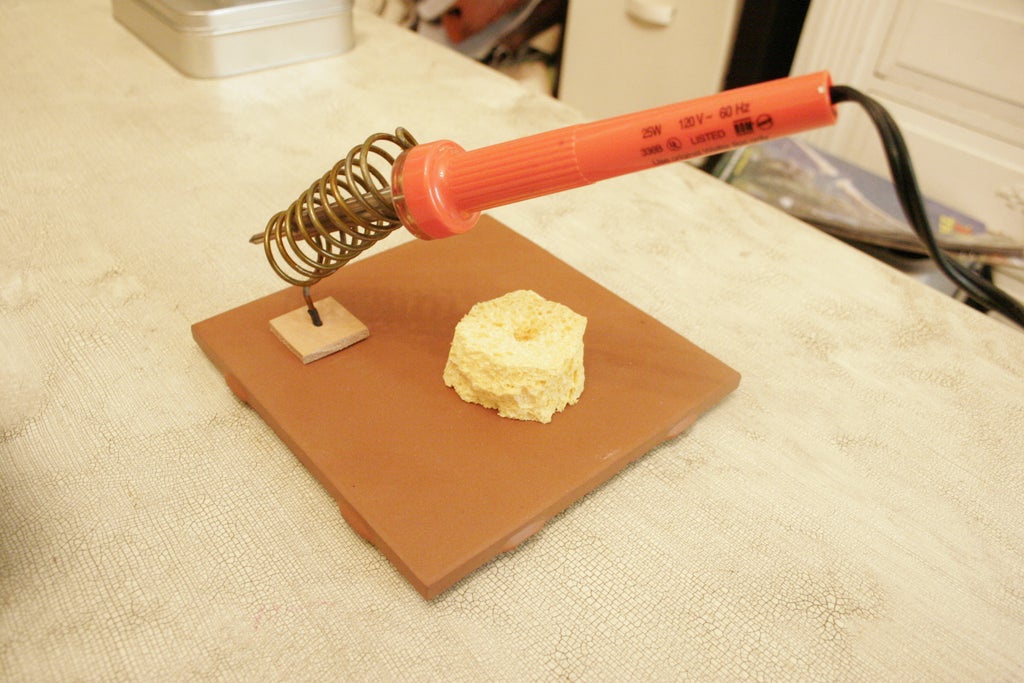
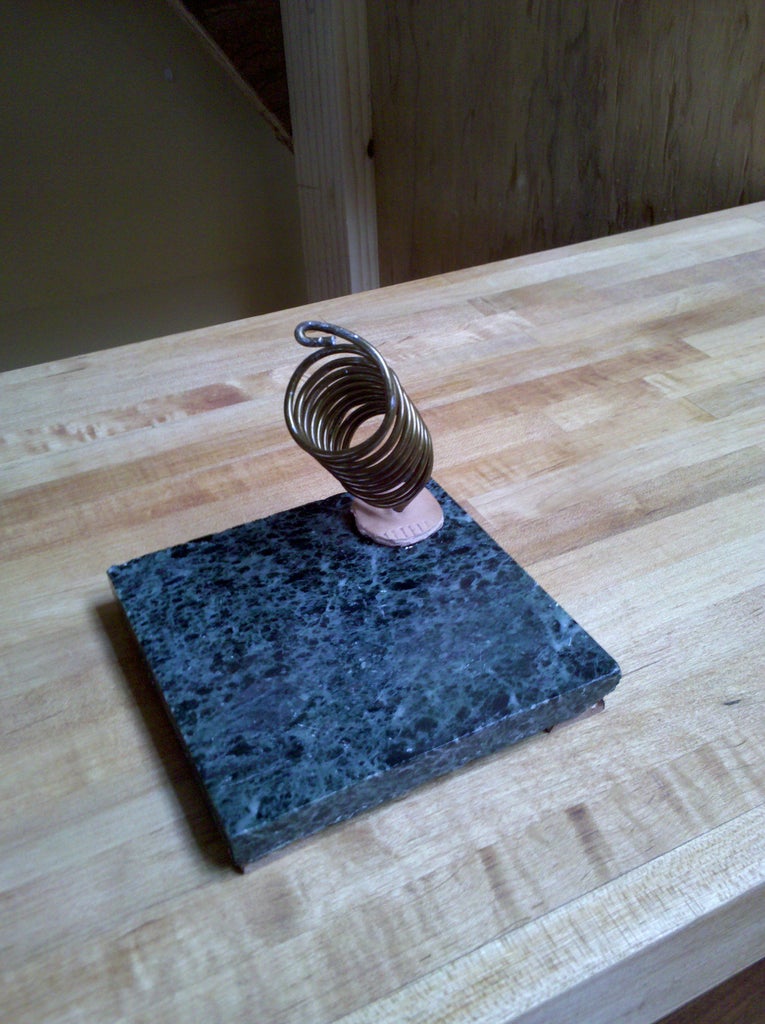
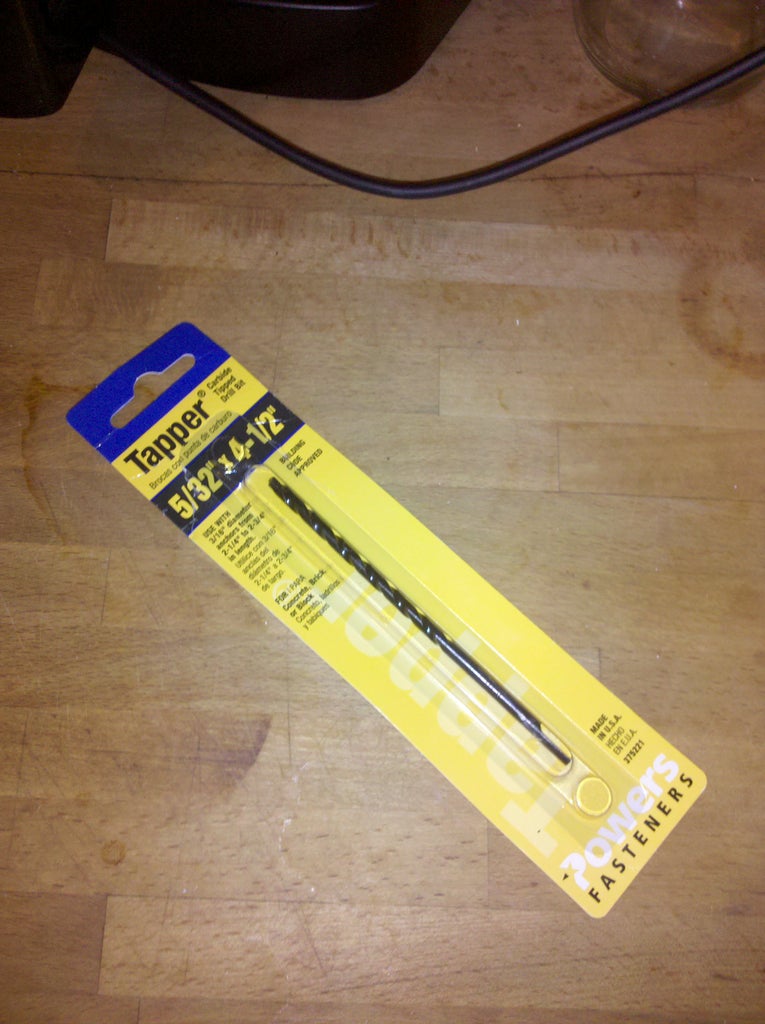
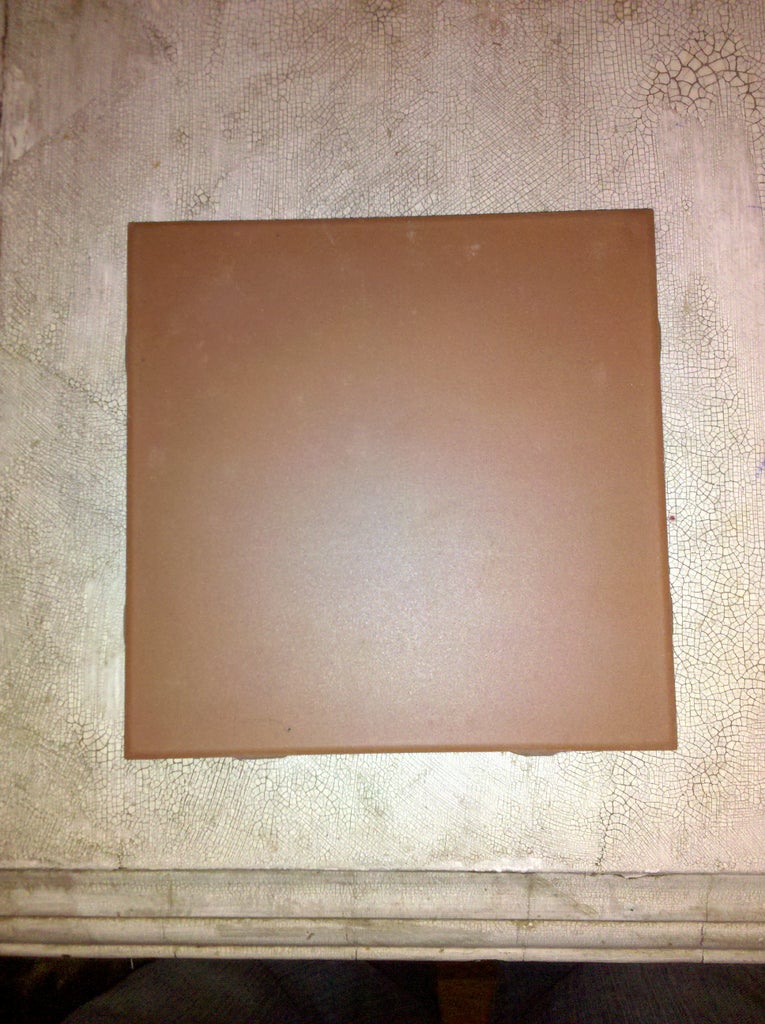
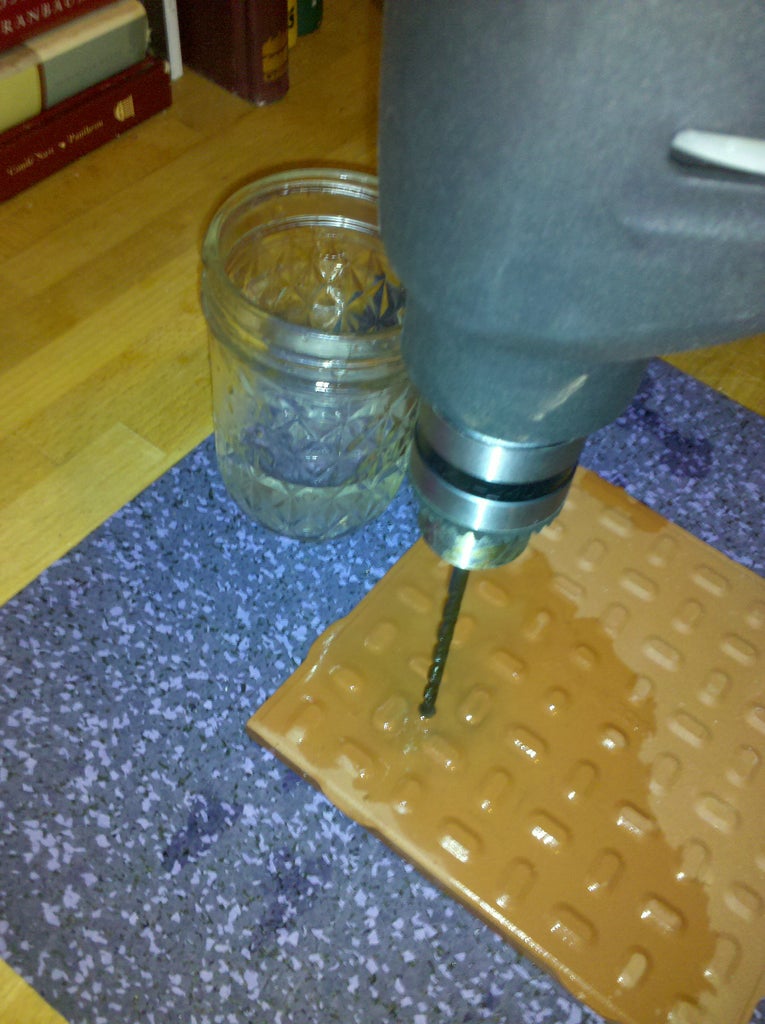
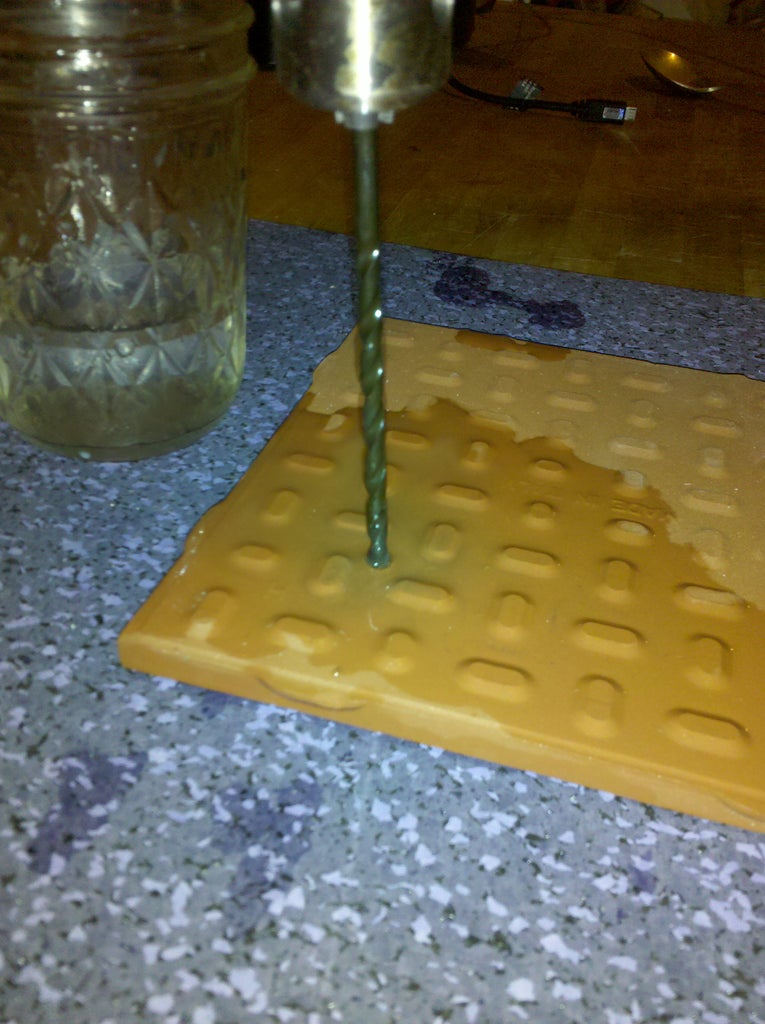
10 Comments
jingo500. 6 years ago
Using the diagonal of the tile/wood is a good idea. Counteracts the weight of the iron. Gonna use it. Just not gonna waste time withn all this bullshit tile business. And epoxy your coil? Fuck off! Use a needle-nose pliers to make a loop in the base of your iron rest base, and screw that thing to your wood block/ whatever base. Epoxy is toxic if ever the iron gets in contact with it. A screw is healthier.
Sini Saja 14 years ago
Dark Magis 14 years ago
SinAmos 14 years ago
nickodemus 14 years ago
Ugifer 14 years ago
joen 14 years ago
Culturespy 14 years ago
indestructable 14 years ago
PyromanX 14 years ago